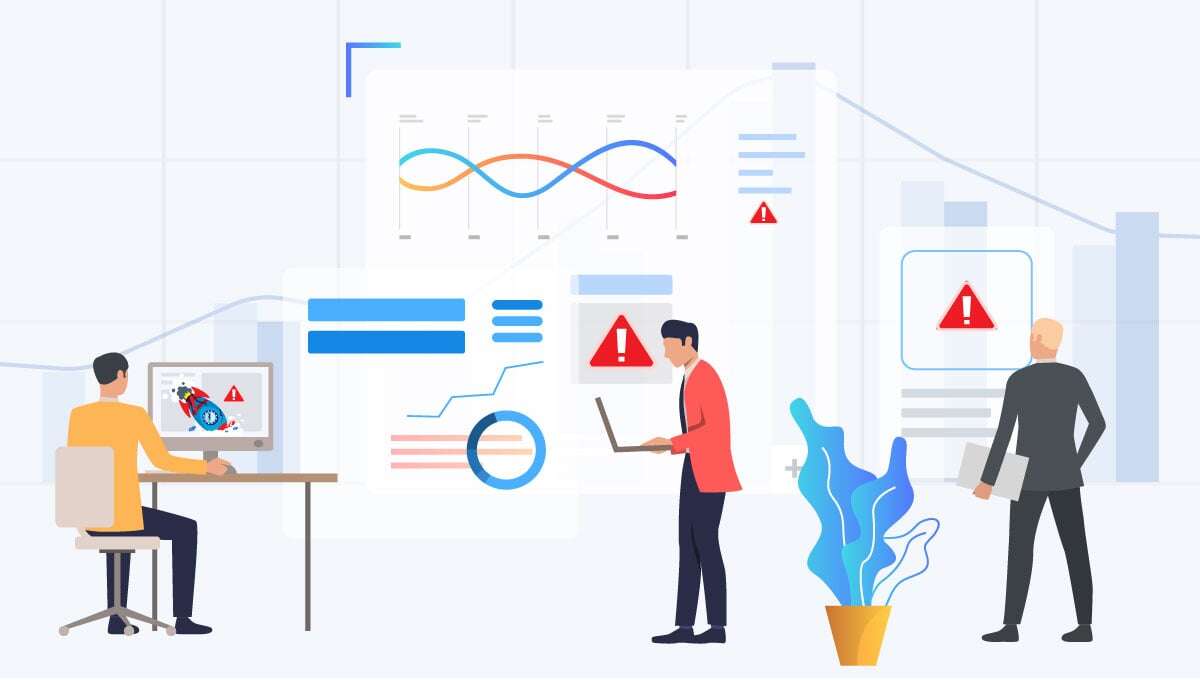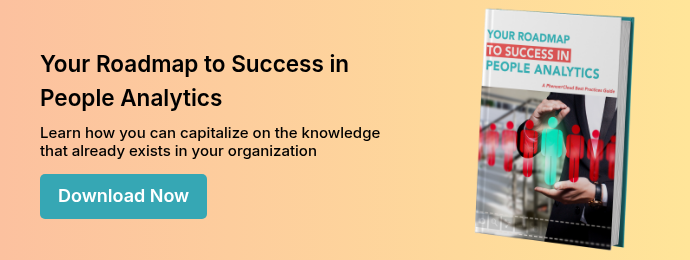
In people analytics, the higher the investment, the higher the potential reward. But it comes with the potential for higher risk.
No risk, no reward, right?
We want to help HR and people analytics leaders avoid risky, expensive mistakes, protect their investments, and improve business outcomes. We previously outlined twelve steps to success in people analytics. As a follow-up, here are twelve reasons people analytics projects may get off to a false start or become stuck.
Investment
1. Half-hearted investment or underinvestment.
A haphazard approach to investment will handicap your people analytics function.
It impedes the team’s ability to complete and deliver assignments on time, which damages their credibility, making it hard for business leaders to take them seriously. On the extreme end, leaders may even opt out of this partnership, losing the opportunity for proper alignment.
Poor alignment between the business and the people analytics team may lead to bad organizational design decisions.
Hesitant or too-small investment devalues the function, as others can construe it as a signal to HR and the organization that it is of little consequence.
Data and Systems
2. Bad data.
Poor data quality can derail even the simplest of people analytics projects. If you’ve ever had to sort through mislabeled files and documents, you know that not only will it compromise your ability to find and use accurate information but cleaning it up can be time-consuming. Data cleansing takes that process to the nth degree when using disparate systems and data entry methods and factoring in human error.
Clean your data, but don’t let it hinder your progress.
3. Pursuing perfect data.
Does perfect data even exist? You’ll never get started if you wait for your data to be perfect, the goal is to create an impact with meaningful insights, and you can do that with the data at your disposal. Ask, what can we do with what we have?
Start small with easy opportunities, secure support, and inspire confidence with small wins.
4. Weak data infrastructure.
Having a robust infrastructure in place smoothens applying insights. It ensures that your data is both usable and valuable qualities that come from having easily accessible, accurate, and timely data.
If your people spend too much time trying to make sense of complex data, it may be because your reporting systems are ineffective. Visualizations and dashboards provide an easy-to-understand format that allows for better use of their time, such as using data insights for problem-solving and decision-making.
Resource Allocation
5. Lack of scalability.
A lack of effective project planning leaves the team unable to expand capacity as demand for projects increases.
Effective project planning will only be achieved by creating a people analytics governance model.
6. Skill or talent shortage.
One of the most common points of failure that organizations struggle with in their people analytics function is a lack of data skills. You need people at various levels of the company who understand how to use data, from top executives and management to analytics staff and those responsible for executing data-driven decisions.
Just as important is avoiding data misuse, which can be potentially more damaging than not using it. Without the skills and knowledge, you risk misuse and an inability to act on insights.
Project Selection
7. Overambitious projects.
Tackling too ambitious projects at the beginning can be self-sabotage. While it’s ok to aim high, you need to start small with manageable projects that require minimal data, add value, and have a high probability of success.
Early short-term wins will gain the support and momentum you need and show proof of value. Taking on too much means you might find yourself stuck for years in a too-large, expensive project of dubious value; meanwhile, the team loses their zeal and belief in the value of people analytics to revolutionize the organization.
-1.jpg?width=446&height=427&name=12-Reasons-People-Analytics-Projects-Fail-infographic%20(2)-1.jpg)
8. Poor prioritization.
How do you prioritize projects? The solution is a governance model. A people analytics governance council would advise on this since your governance framework would include well-defined criteria for making decisions based on impact and complexity. The Complexity-Impact Matrix above is a tool that would guide the order of projects. Assess projects using specific impact and complexity criteria in the matrix.
9. Lack of relevance.
Another project selection mistake is undertaking those that lack relevance to the business. “Interesting” isn’t sufficient selection criteria for a people analytics project. Value, yes. For example, one favored area for launching workforce analytics is attrition, but if turnover isn’t a significant business problem for your organization, then the effort will not add value. Establish your leadership’s top priorities. What is the CEO concerned about? Is it hiring the right people? Then start with recruitment analytics.
10. Actionability of insights.
A project might be relevant and be the right size and scale, but if the findings aren’t actionable, they’re useless. If you cannot manipulate or change factors to improve outcomes, they are just cocktail party conversation trivia that’s nice to know. After all, the purpose of analytics is to turn data into action. The metrics you choose to track will determine the actionable value of the insights. They need to be relevant, specific, and valuable.
Ethics
11. Privacy violation.
Breach of employee trust because of an ethical lapse can have catastrophic consequences and jeopardize the implicit “license” to continue. Misuse of employee data violates privacy and can spell disaster for those involved. It also has ramifications if it leads to distrust affecting employee willingness to provide data and cooperate. Also, their attitude towards data collection may be poisoned, so even if they provide information, it may not be reliable. To avoid this, proper ethics in regulatory governance compliance in people analytics must be non-negotiable.
12. Compliance.
Running afoul of regulatory guidelines or industry best practices, whether legal or not, can cast a dark shadow on any organization and make it extremely difficult to continue. While the law may provide a good starting point for considering the collection and use of employee information, their rights and sentiments also have merit. This is where ethics comes into play. It is the gap between what companies can legally do and what they should do. Tread carefully.
There are many reasons people analytics projects fail, fall short of intended goals, or get stuck, and the way forward becomes uncertain. Most of the stumbling blocks come down to governance. Without the clear direction, standards, stewardship, and accountability that a solid governance foundation provides, ROI will be elusive.
PhenomᵉCloud is a comprehensive technology solutions provider committed to empowering businesses to overcome challenges, enhance their workforce capabilities, and achieve superior outcomes.


Leave a Comment